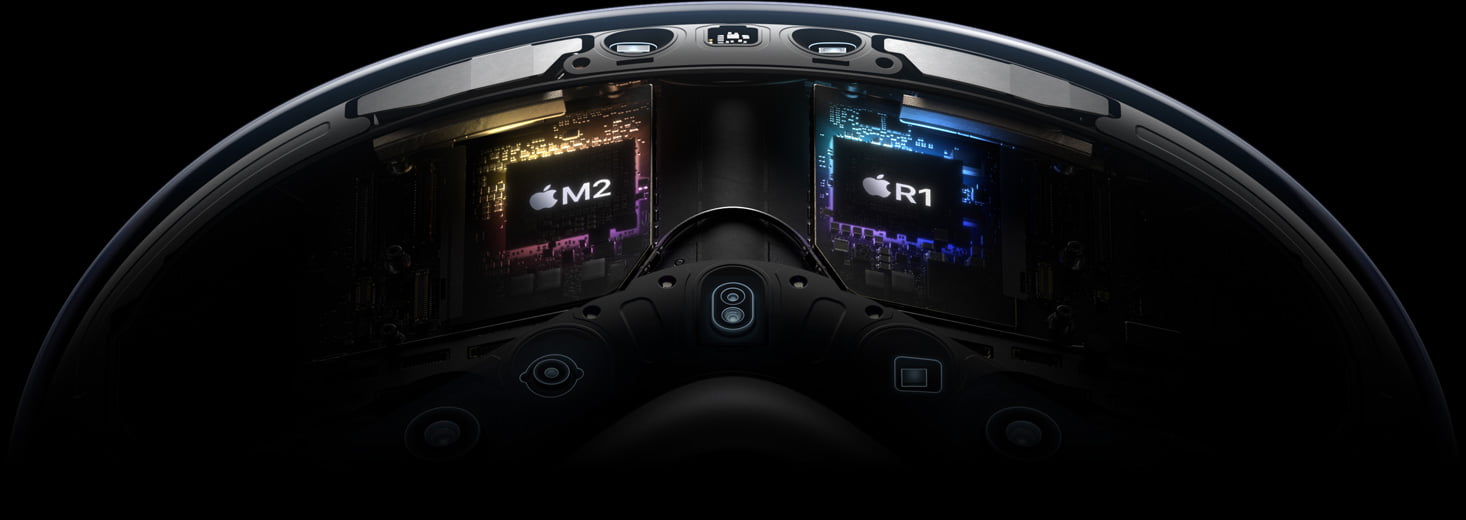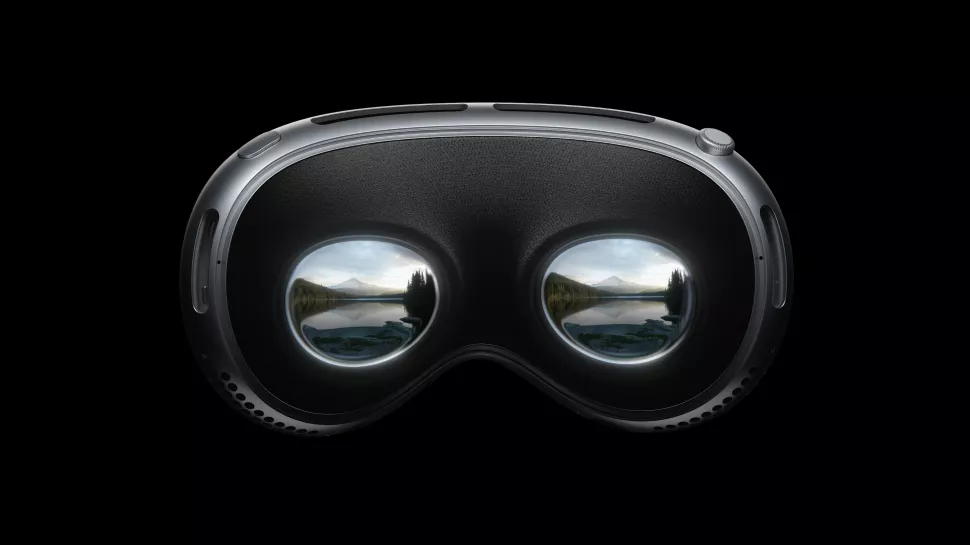The world of architectural design and 3D visualization is about to take a giant leap forward, thanks to the recent unveiling of two groundbreaking products: Apple’s Vision Pro and Meta’s Quest Pro / Quest 3. These cutting-edge devices will revolutionize the way architects, designers and their clients interact with, perceive and visualize architectural projects, taking 3D modeling and visualization to new heights. In this blog post, we explore the potential applications of these cutting-edge technologies in architectural design and the exciting possibility of combining augmented reality (AR) and virtual reality (VR) to create truly immersive experiences.
Apple Vision Pro: A New Era in Architectural Visualization
Apple’s Vision Pro, announced just a few days ago, has generated great excitement in the tech industry and will have far-reaching implications, including for the field of architectural design and visualization. With its groundbreaking mixed reality capabilities, the Vision Pro combines a mix of VR and AR in one headset, providing architects with a powerful tool to showcase their work.
One of the standout features of the Vision Pro is its dual 4K resolution per eye. This feature provides an unprecedented level of detail and allows architects to present their designs with high accuracy and precision, giving their clients a realistic impression of their project. This can be especially useful in the early stages of design, when clients can only envision the final product from 2D drawings.
In addition, Vision Pro’s unique design features, such as the absence of controllers and the use of hand tracking, eye movements and voice input, make for an intuitive and interactive experience. Architects can guide clients through virtual tours of their designs, interacting with the virtual environment in a natural and intuitive way. Clients can “touch” and “move” objects, providing immediate feedback that can be invaluable to the design process.

The Vision Pro’s external battery pack, a design decision that may seem unconventional, actually opens up opportunities for extended use, allowing for longer, uninterrupted visualization sessions. This can prove essential during collaborative design meetings or comprehensive project reviews.
The Vision Pro is a mixed reality headset that combines elements of AR and VR to provide immersive experiences that take 3D visualization to a new level. The headset runs on VisionOS and features dual 4K resolution per eye. It delivers incredibly detailed and realistic images that are critical for 3D modeling and architectural visualization.
Interestingly, the Apple headset uses two chipsets, an M2 and a new R1, to drive the regular software and XR functions, respectively. This powerful hardware enables smooth rendering of complex 3D models and renderings and could revolutionize the way architects and designers present and interact with their work.
Unlike traditional VR headsets, the Vision Pro doesn’t come with controllers. Instead, it uses hand tracking and voice input to control its software, providing a more intuitive and immersive user experience. Imagine being able to manipulate a 3D building model with your hands or control your virtual environment with your voice. The unique capabilities of Vision Pro offer an exciting glimpse into the future of architectural work and 3D visualization.

Meta Quest Pro / Quest 3: Redefining Virtual Reality in Architecture
Just weeks before Apple announced the Vision Pro, Meta unveiled its latest VR headset, the Quest 3. With a 40% slimmer design and a powerful new Snapdragon chipset, the Quest 3 offers a comfortable, high-performance VR experience. Its potential applications in architectural design and visualization are equally exciting.
The Quest 3’s enhanced graphics performance can render architectural models in high resolution, providing a higher level of detail and realism. The device also has an enhanced high-fidelity color passthrough feature that allows users to see the real world around them in full color through the headset. This is an exciting development for architects as it offers the ability to blend virtual designs with the real world, creating a unique AR experience that can help clients understand how a new building or space will interact with its surroundings.
The Fusion of AR and VR: The Future of Architectural Visualization
The introduction of devices such as the Vision Pro and Quest Pro / Quest 3 represents a significant step towards the convergence of AR and VR. This convergence represents an exciting new frontier in architectural visualization.
The use of AR can provide contextual information and overlays to real views, while VR immerses users in a fully digital representation of a space.

Contact Us
Do you have a project that you would like to talk about? Wondering which 3D visualization will work best for you? Do you have a question for us about how we work? Leave us a message here – and we will contact you!



